21 Ways to Do Laundry in Your Freezer

Most of us don’t think twice about throwing everything from underwear and socks to jeans and sweaters in the washing machine. But, in many cases, this could be doing more harm than good or not sufficiently killing bacteria and microscopic mites. But another household appliance can freshen up your clothes faster and keep them looking like new longer: Your freezer. To help you get acquainted with this laundry method, we’ve rounded up 21 surprising freezer hacks that can preserve your favorite clothes and accessories, saving you time and money and even keeping you healthier. Read on to hear from experts about all the ways you should be doing laundry in your freezer.
READ THIS NEXT: What Happens When You Don’t Wash Your Sheets Every Week, Doctors Say.
How to Do Laundry in Your Freezer
1. Keep jeans clean without shrinking
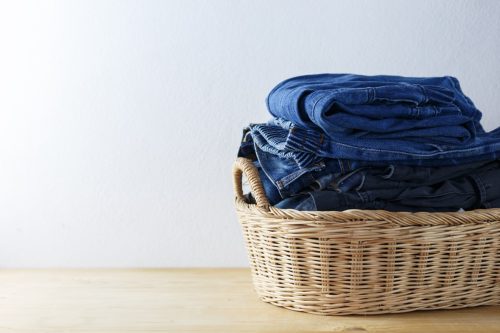
Regular cycles in the washing machine can cause denim to shrink or become misshapen, but there’s a simple solution—popping them in the freezer.
If the thought of not washing your jeans grosses you out, don’t fear: A study conducted at the University of Alberta revealed that even after 15 months without washing, regularly-worn jeans didn’t harbor harmful bacteria. Better yet, popping them in the freezer did the trick when it came to curbing the potent smell they’d acquired.
How is this so? “The low temperature slows down bacterial activity significantly and eliminates microscopic bugs that might be dwelling on your clothes,” explains Rocky Vuong, founder and owner of Calibre Cleaning.
2. Keep cashmere soft
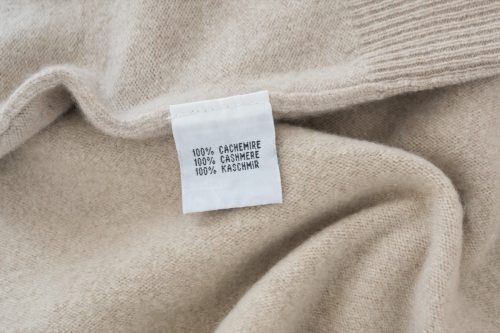
Many people disagree on the best means of caring for cashmere. Some argue that dry cleaning chemicals break down cashmere faster, while others claim that hand-washing will cause it to lose its softness and shape.
But one thing is for sure: Putting your favorite cashmere sweater in the freezer will help refresh it fast and without the wear and tear associated with traditional cleaning methods.
“When you remove your clothing from the freezer, put it on a hanger, give it a spritz of cashmere spray—a clothing refresher that contains a little cedar oil—and hang it in the bathroom during your shower to steam out,” advises cashmere manufacturer Lands End.
3. Reduce pollen on clothing

Allergies are the sixth-leading cause of chronic illness in the U.S., affecting more than 50 million people each year, according to the American College of Allergy, Asthma & Immunology (ACAAI). And pollen is among the most common allergens out there.
If you suffer from seasonal allergies, all it may take is your freezer to reduce some of the pollen that accumulates on your clothing. According to research published in Cryptobiology, rapid freezing and subsequent thawing reduces pollen’s viability, potentially providing some relief for allergy sufferers.
4. Prevent color bleeding
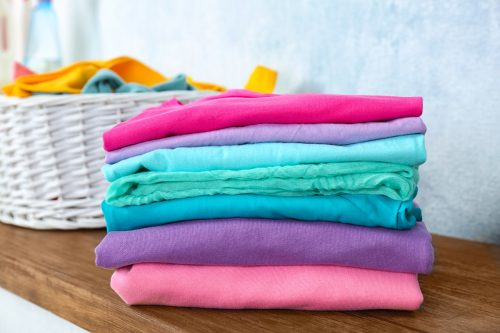
There are few things that fade clothes faster than a trip through a hot wash-and-dry cycle. To preserve the vibrant hues of your clothing, including jeans, try alternating between washing and freezing.
Since your freezer isn’t exposing your clothing to any water or chemicals, the dye will hold fast for far longer than it would if you were washing it every time.
This is also helpful if you’ve bought a new item, says Prerna Jain, owner and founder of Ministry Of Cleaning. “For instance, if you have a new, brightly colored garment that may bleed onto other clothes during washing, placing it in the freezer before the first wash can help set the dye and minimize color transfer.”
5. Reduce moth infestations in wool

Pulling out your favorite wool sweater only to find it full of moth holes is certainly frustrating. Unfortunately, many people don’t realize that their home is serving as a temporary residence for moths and their larvae until it’s too late.
But according to the Department of Entomology at Cornell University, temperatures below 40 degrees can inactivate moth larvae, and leaving a garment at zero degrees for more than 72 hours can kill them completely.
READ THIS NEXT: 5 Items You Should Never Store in Your Pantry, According to Experts.
6. Kill off bed bugs

Trying to rid your home of bed bugs can feel like a daunting and often expensive task. But luckily, your freezer might be the easiest way to get rid of these pests.
According to a study by the Entomological Society of America, placing potentially-infested clothing or bedding in a plastic bag and leaving it in a freezer on its coldest setting for two to four days can help get rid of them.
However, if you want to obliterate them without question, a chest freezer is your best bet: Researchers found that 80 hours at negative 16 degrees Celsius killed all bed bugs and their larvae.
7. Remove dust mites from bedding

According to the Asthma and Allergy Foundation of America (AAFA), dust mites are likely the single largest trigger of allergies and asthma worldwide. And scarier still, there are likely upwards of 1.5 million of them hiding out in your bed right now, “feasting on your old skin cells,” notes Science Alert.
However, research published in Pediatric Allergy and Immunology reveals that freezing soft toys is even more effective than washing when it comes to killing dust mites, reducing 95.1 percent of their numbers after an overnight stay in a freezer.
The same logic can be applied to bedding, though you’ll probably still want to give your sheets a cycle through the regular washing machine as well.
8. Stretch leather boots
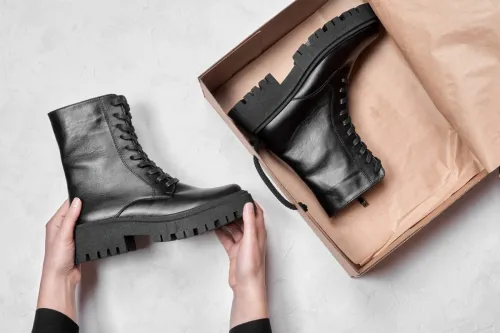
We’ve all been there: You buy an amazing new pair of leather boots, only to find that they’re pinching your toes after a few minutes. But, according to experts, sticking them in the freezer can help them stretch out.
“Get a ziplock bag, fill it with water, and place it into the tightest part of the shoe (a bag of water is surprisingly easy to fit inside of a shoe!),” suggests Carlos Garcia, group managing director at Total Clean. “Because water expands when it freezes, it’ll stretch out the material without any pain.”
Just be sure the bags are tightly sealed so no water crystals can form on the leather.
9. Get gum off shoes or out of clothes
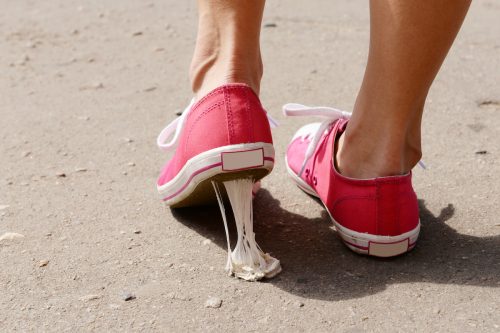
Stepping in gum is one of those “why me?” moments that can ruin an otherwise enjoyable day. And while trying to scrape something that’s been in a stranger’s mouth off your shoes is never a pleasant experience, freezing your afflicted footwear can make it a whole lot less arduous.
Simply put the offending shoe in a sealed bag, freeze it for 12 hours, and when you take it out, the gum will have hardened to the point where it can be easily removed.
Garcia says this applies to gum stuck on clothing, too. “The fabric of the clothes will tighten together, which will loosen any other substance on the fabric,” he explains. “Usually, once you remove the clothes from the freezer, you can use an ice cube to physically remove [the gum] from the fabric!”
10. Remove sticky stains

If you’ve ever spilled something sticky on your clothing, you know how difficult that mess can be to remove. But your freezer can help.
Sugary substances, like honey and maple syrup, harden at cooler temperatures, making them easier “to scrape or blot away” after they’ve been frozen, shares Jain. “This method can also increase the effectiveness of subsequent stain treatments.”
READ THIS NEXT: 21 Ways You’re Washing Your Clothes All Wrong, According to Experts.
11. Prevent blood stains from setting in
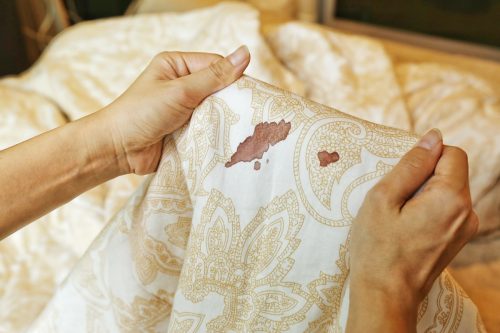
Blood, especially when it’s gotten on a white piece of clothing, can be one of the hardest stains to remove.
“To increase your chances of success, rinse the stained fabric with cold water, then place it in a freezer bag and freeze it,” advises Muffetta Krueger, cleaning expert and founder of Muffetta’s Domestic Assistants. “Freezing helps prevent the stain from setting further. Once frozen, gently scrape off any remaining residue, then treat the stain following your usual stain removal method.”
12. Refresh workout accessories

Not every just-worn-to-the-gym accessory merits a full load of laundry, but that doesn’t mean those stinky sweatbands shouldn’t be freshened up before you wear them again—which is why sticking them in the freezer is an easy solution.
“The cold temperatures will kill the bacteria and the source of any odor at the same time,” notes Garcia.
13. De-stink gym shoes

There are few things more offensive than a stinky gym shoe, but for most people without unlimited utility budgets, washing and drying your sneakers after every trip to the gym just isn’t in the cards.
Luckily, freezing your sneakers in between washes can weed out some of the more pungent bacteria hanging out in them—an olfactory boon to you and your fellow gym-goers.
14. Protect against germy new clothes

While it’s nice to imagine that everything we buy off the rack is clean as a whistle, the truth is that our new clothes are probably teeming with bacteria.
According to research conducted by Philip Tierno, a professor of microbiology and pathology at New York University (NYU), everything from strep to staph to norovirus to fecal bacteria has been discovered in unwashed “new” clothing.
However, separate research from the Microbiology Society suggests that freezing is capable of killing or incapacitating certain bacteria, making it a good first step when you bring clothes home—just make sure to put them in a sealed bag first to avoid contaminating the rest of your fridge.
15. Prevent rips and runs in tights

Anyone who’s ever worn a pair of tights knows that feeling of dread you get when they suddenly rip or get a run that keeps expanding. But placing them in your freezer can help.
Simply dampen the tights, remove any excess water, place them in a sealed bag, and freeze them overnight, according to StyleCaster.
“Your freezer’s ice-cold environment keeps each fiber of your tights, well, tight, which makes runs and rips that much harder to create,” they explain. The same logic can be applied if you need to firm up a pair of stretched-out tights.
For more cleaning advice delivered straight to your inbox, sign up for our daily newsletter.
16. Protect fur

Having a fur coat—or even just fur add-ons, like cuffs or a collar—can be seriously cost-prohibitive. Even worse, fur is a particularly attractive fabric for all kinds of pests, like mites, moths, and carpet beetles.
Luckily, you don’t have to spend half your paycheck to refresh your fur items. Simply place them in the freezer to kill off anything that could be calling your clothes home.
“We recommend letting your coat sit for a length of no less than three full days,” advises fur company Morris Kaye & Sons.
Just make sure that the fur is in good condition before doing so, as fur with a cracked hide underneath can tear if exposed to freezing temperatures.
17. Reduce sweater pilling
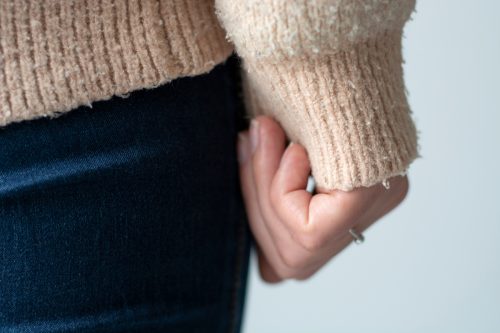
Pills—those little nubbly bits on your sweaters—are one of the fastest ways to ruin the look of a beautiful piece. Worse yet, many of the tools designed to remove them, like clothing razors, can stretch your garments or even cause holes in them with repeated use. This is where the freezer comes in.
As alpaca wool brand BellePaga explains, the cold temperature of the freezer will tighten the sweater’s fibers, making it less susceptible to pilling. They recommend placing a sweater in a plastic bag in the freezer for roughly 48 hours and then letting it thaw before a regular wash.
18. Stop fraying
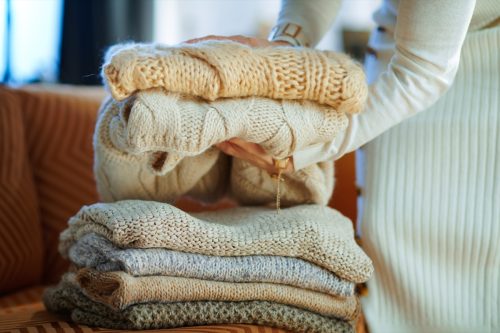
Garcia says that since the freezer “will draw clothes’ fibers closer together and lock them in place,” it also reduces the future change of fraying or shedding. “This is particularly effective for cashmere and wool,” he adds.
19. Remove perfume smells

If you’ve ever purchased a perfect vintage item only to discover that it’s still bearing the flowery scent of its previous owner, there’s still hope. Perfume is best stored at a consistent temperature, meaning that major fluctuations, whether hot or cold, can cause the scent to deteriorate faster.
However, if you’re trying to remove a persistent perfume scent from an item of clothing via the freezer, make sure you’re not sealing the bag first, says Carolyn Mix, co-owner of 2Note, a perfumery based in Hudson, New York. “Oxygen is a great destroyer of fragrance molecules.”
20. Get cigarette odors out

Cigarette odors in clothing are unpleasant enough as it is, but the combination of cigarettes and another person’s bodily bacteria on certain vintage items can make them particularly tough to remove.
However, popping your clothing in the freezer can help kill off some of the bacteria those cigarette odors may be clinging to, helping you mitigate them in a hurry.
Just be sure you also wash your clothes afterward, as a 2018 study revealed that even thirdhand smoke—the kind that might be lingering on your clothes—can have a detrimental effect on your health.
21. Keep cool on hot days

Misting your clothing with a little bit of cool water and freezing it before you wear it on a warm day can help keep you cool. In fact, research presented at the 7th European Conference on Protective Clothing revealed that wearing slightly wet clothing, thanks to its cooling effect as the water evaporates, is particularly effective at keeping the human body cool and at low risk for heat stroke.
READ THIS NEXT: 5 Ways You’re Making Stains Worse When Trying to Remove Them.
Some things to keep in mind when doing laundry in your freezer

“While freezer cleaning can be an effective alternative for certain items, it’s important to remember it’s not suitable for all types of clothing or fabrics,” advises Colin Matthiesen, marketing and quality assurance specialist at PR Cleaners. “It also won’t remove stains or deeply embedded dirt, so traditional washing methods are still essential.”
If you do go the freezer route, Matthiesen says it’s usually advisable to keep your clothing in a sealed plastic bag, so there is no transfer of food odors to the fabric, and vice versa.
And don’t try to speed up the thawing process by applying heat to your clothing, as it can harm the fabrics.
Lastly, he says you’ll want to leave most “dirty” items in the freezer for at least 24 to 48 hours. “This duration is typically enough to kill bugs and bacteria.”